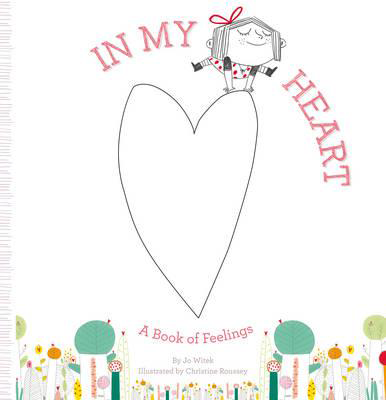 by Jo Witek
by Jo Witek
In My Heart explores a full range of emotions, describing how people feel. The lyrical language in the book will encourage students to practice articulating and identifying their own emotions.
Strategies/Skills Used
Reading Strategy 1: Access background information.
Reading Strategy 2: Predict what will be learned or what will happen.
Reading Strategy 3: Figure out unknown words.
Reading Strategy 5: Make mental pictures.
Reading Strategy 6: Connect what you read with what you already know.
Reading Strategy 7: Determine the most important ideas and events and the relationship between them.
Reading Strategy 8: Extract information from text, charts, graphs, maps and illustrations.
Writing Skill 2: I organize my ideas based on my purpose for writing.
Writing Skill 5: I carefully choose the most effective words to express my ideas.
 TEACHING THE ACTIVITY: PRE-READING
TEACHING THE ACTIVITY: PRE-READING
(1) Invite students to gather in a community circle. Ask students to Brainstorm the different types of feelings that they have felt.
(2) Write the feeling words on the board or poster paper.
(3) Provide an opportunity for students to associate a colour with each of the feelings listed. Write, or have students write, the feelings on the appropriately coloured paper.
 (4) Arrange students in partners or groups of three and ask them to Sort and Predict the feeling words that are up on the board into no more than five categories. Have them label the categories. Students may use a classification chart to help with sorting.
(4) Arrange students in partners or groups of three and ask them to Sort and Predict the feeling words that are up on the board into no more than five categories. Have them label the categories. Students may use a classification chart to help with sorting.
(5) As a class, discuss how the groups categorized the feelings, and make predictions about what the story may be about.
 TEACHING THE ACTIVITY: DURING READING
TEACHING THE ACTIVITY: DURING READING
(6) Read the story aloud to the class. As you progress through the story, stop and ask the students if each feeling they encounter was a feeling they had brainstormed as a class. Ask the students if the colour the author chose for the feeling was the same as what they chose.
(7) Select three of the feelings presented in the book and explore them further as a class using the Colour-Symbol-Image strategy (see Making Thinking Visible by Ron Ritchhart, Mark Church and Karin Morrison). The colours, symbols and images chosen could be drawn from the book or from ideas shared by the students.
(8) Add any new feelings that are presented in the book to the class brainstorming list.
 TEACHING THE ACTIVITY: POST-READING
TEACHING THE ACTIVITY: POST-READING
(9) Have the class choose one of the feelings that was brainstormed to explore further. They may want to choose a feeling that is new to them.
![]() (10) Have students create their own My Feeling Page. Instruct students to show their thinking in words and images, similarly to the way the class did with the Colour-Symbol-Image strategy. On the My Feeling Page, students will represent the feeling with a colour, image or action for the feeling and a write-up describing the feeling.
(10) Have students create their own My Feeling Page. Instruct students to show their thinking in words and images, similarly to the way the class did with the Colour-Symbol-Image strategy. On the My Feeling Page, students will represent the feeling with a colour, image or action for the feeling and a write-up describing the feeling.
(11) Allow time for students to have a Gallery Walk of their classmates’ feelings pages.
(12) Collect all the students’ feeling pages and create a class Little Feelings Book that the students can refer to throughout the year.